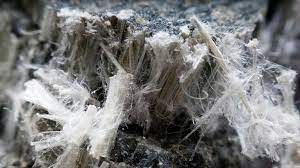What is Asbestos, what are the main types and where does it come from?
Asbestos is a naturally occurring mineral that has been used for centuries due to its unique properties.

Asbestos is a naturally occurring mineral that has been used for centuries due to its unique properties. It was primarily used for insulation, fire resistance and as a strengthening agent in various building materials. However, it has now been banned in many countries due to its severe health risks, including lung cancer and mesothelioma. In this article, we will explore what asbestos is, its history of use, the main types of asbestos, where it comes from, and how to identify it.
Introduction to Asbestos
Asbestos is a naturally occurring mineral that is composed of thin, fibrous crystals. These crystals are extremely durable and resistant to heat, chemicals, and electricity, making it a popular material for various industrial and commercial applications. Asbestos has been used in a variety of products, including building materials, automotive parts, and textiles.
What is Asbestos?
Asbestos is a group of six naturally occurring minerals that are composed of thin, fibrous crystals. The six types of asbestos are chrysotile, amosite, crocidolite, tremolite, anthophyllite, and actinolite. Chrysotile is the most common type of asbestos and accounts for approximately 95% of all asbestos used in the United Kingdom.
The History of Asbestos Use
Asbestos has been used for centuries due to its unique properties. The ancient Greeks and Romans used asbestos to make clothing, tablecloths, and napkins. In the 1800s, asbestos was used as insulation in steam engines. It wasn't until the early 1900s that asbestos became widely used in building materials. However, by the 1970s, the severe health risks associated with asbestos were widely known, and its use began to decline.
The Main Types of Asbestos
The six types of asbestos are chrysotile, amosite, crocidolite, tremolite, anthophyllite, and actinolite. Chrysotile is the most common type of asbestos and is often referred to as "white asbestos." It is primarily found in commercial and industrial applications, including insulation, roofing, and brake linings. Amosite, or "brown asbestos," is primarily found in insulation and ceiling tiles. Crocidolite, or "blue asbestos," is considered to be the most dangerous type of asbestos and is primarily found in insulation and cement products. Tremolite, anthophyllite, and actinolite are not commonly used in commercial applications.
Where Does Asbestos Come From?
Asbestos is found naturally in rocks and soil. It is primarily mined in Russia, China, and Canada, although it has been mined in other countries as well. Asbestos is often found in close proximity to other minerals, including talc and vermiculite. Asbestos fibres can be released into the air during mining and processing, posing a severe health risk to workers and nearby residents.
The Uses of Asbestos
Asbestos has been used for centuries due to its unique properties. It is primarily used for insulation, fire resistance, and as a strengthening agent in various building materials. Asbestos has been used in a variety of products, including roofing shingles, ceiling tiles, floor tiles, cement products, and automotive parts.
How to Identify Asbestos
Identifying asbestos can be difficult, as it is often mixed with other materials. The only way to definitively identify asbestos is to have a sample analysed by a qualified laboratory. However, there are some common signs that may indicate the presence of asbestos, including the age of the building, the type of materials used, and the condition of the materials.
Conclusion
Asbestos is a naturally occurring mineral that has been used for centuries due to its unique properties. However, it is now widely known that asbestos poses severe health risks, including lung cancer and mesothelioma. It has been banned in many countries, but it can still be found in older buildings and products. If you are worried that you may have asbestos in your property, it is essential to contact a qualified professional to identify and remove it safely.
Contact Consulo Compliance today and let us help keep you safe.









